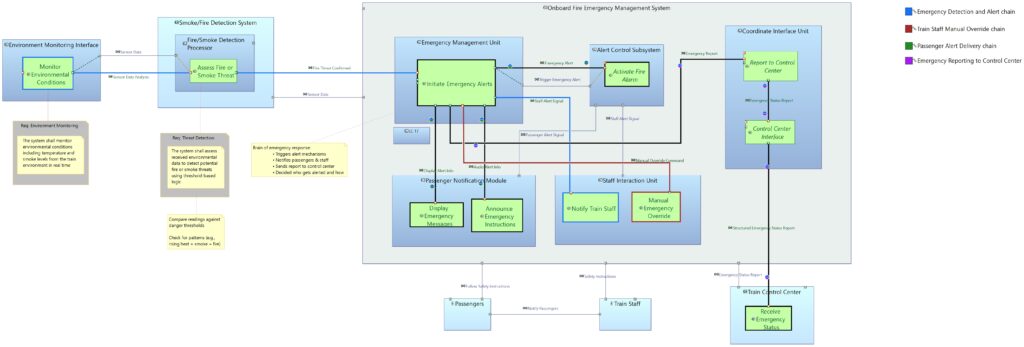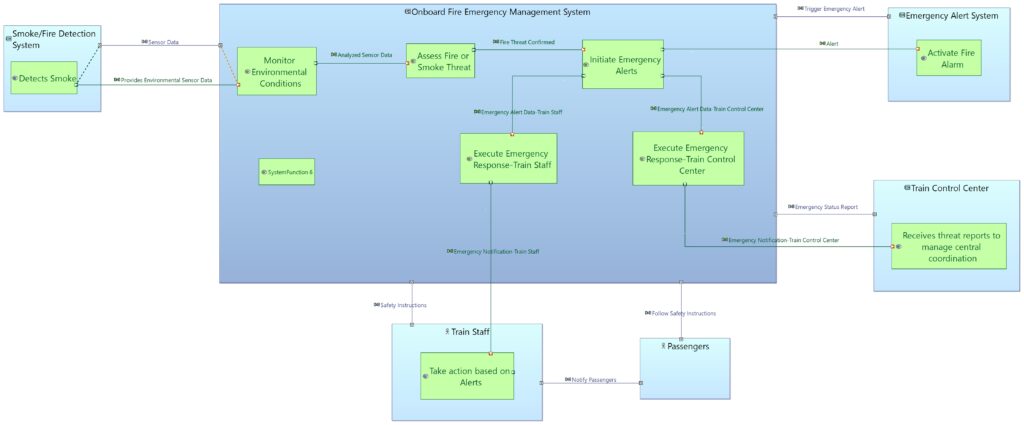Designing A Fire Detection System For Railways Using Capella
The Challenge
Railway systems are inherently complex, with many subsystems that must interact smoothly to deliver reliable operations. Even something as specific as a fire detection system involves multiple stakeholders, different operational scenarios, and the need for clear coordination between onboard and external systems.
In many projects, Model-Based Systems Engineering (MBSE) is not applied consistently, which limits the ability to analyse such interactions early. By modeling in Capella, it becomes possible to identify operational conditions, clarify responsibilities, and structure the system from the beginning reducing ambiguity and supporting smoother progression from concept to implementation.
My Approach
To address this, I applied Model-Based Systems Engineering (MBSE) using the Capella tool and the Arcadia methodology. I structured the project in three layers:
- ● Operational Analysis (OA): Focuses on understanding the context—who the stakeholders are, and how they interact in different operational scenarios.
- ● System Analysis (SA): Defines what the system must achieve by breaking down high-level needs into essential system functions.
- ● Logical Architecture (LA): Maps these functions into a structured architecture, showing how responsibilities are distributed across logical components.
This layered approach ensures that the design is clear, traceable, and ready to evolve as new requirements emerge.
Key Benefits
- ● Clarity – clear separation between context, system functions, and architecture.
- ● Consistency – structured progression from problem space to solution space.
- ● Extensibility – ability to add requirements, or new features without rework.



This highlights how MBSE with Capella can turn a complex railway subsystem, such as fire detection, into a clear and structured model. Beyond just creating diagrams, the process provides a common language for engineers and stakeholders, making discussions more precise and reducing the chances of misalignment later.
The real value lies in building a foundation one that can be extended with requirements, validation, and future enhancements without reworking the entire design. In this way, MBSE doesn’t just document a system, it enables smarter engineering decisions from the very beginning.
If you are interested in understanding how to adopt systems engineering and model based systems engineering practices within your organization, reach out to BlueKei Solutions team at info@Blue-Kei.com. We specialize in systems engineering consulting, project executions, process adoptions such as compliance to ISO15288, ARP 4754A, ISO 42020, digital transformations. We can also conduct capability development workshops which are experiential and tailored to your needs. With systems engineering adoption you can address the complexity, manage evolving risks and bring transformation in communication within your organization through digitalization and create the digital thread.

